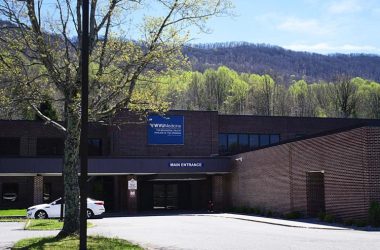ELKINS, W.Va. — The United States Foresty Department has asked the public to chime in on whether or not to allow surveying teams to analyze a 17.1 mile stretch of Monongahela National Forest that is situated on the proposed route of the Atlantic Coast Pipeline.
Currently expected to traverse Cheat, Shavers and Burner mountains in Randolph and Pocahontas counties, the proposed route of the natural gas pipeline crosses several significant waterways, including the West Fork of the Greenbrier and Shaver’s Fork of the Cheat, as well as numerous streams and creeks that operate as the headwaters for many of the region’s rivers.
According to a press release from the Forestry Department, Dominion Resources is seeking a 12-month planning permit for the purpose of conducting field activities, such as field routing and environmental, cultural resource and civil surveys, along a 300-foot-wide survey corridor within a 2,000-foot-wide study corridor where the proposed pipeline crosses the forest.
The headwaters of six major river systems are located in Monongahela National Forest: the Monongahela, Potomac, Greenbrier, Elk, Tygart and Gauley rivers.
The national forest, which holds countless recreation opportunities for locals and tourists alike, is also home to at least 75 tree species, more than 225 species of birds, eight federally-listed endangered or threatened species, 12 species of game fish and a diverse array of wildlife.
Maria Gunnoe, a Bob White native, owns a camp in Pocahontas County near the proposed route. She said she watched as her hometown was ravaged by the coal industry and is concerned about the gas industry destroying her remaining “West Virginia escape.”
“Don’t let the gas industry get a hold in this area. If people don’t stand united now and say no, everything they care about and love is at risk of being destroyed forever,” Gunnoe said. “Not only should they take this opportunity but they should take every opportunity to oppose and stop this activity. This place is paradise and we should keep it that way.”
Kate Goodrich-Arling, staff officer for Lands, Planning and Public and Legislative Affairs for the Forestry Department, said public comment is a valuable resource.
“It’s public land, so when we send out a request for comments, it’s never done just for sending out an email – we’re truly looking for comments,” she said.
Public comments on the proposal can be sent to Monongahela National Forest, Attn: Atlantic Coast Pipeline Survey Permit Comments, 200 Sycamore Street, Elkins, WV 26241.
Comments may also be sent via email to [email protected] with “Atlantic Cost Pipeline Survey Permit Comments” as a subject. Comments can also be sent via fax at 304-637-0582 including the subject line “Atlantic Coast Pipeline Survey Permit Comments.”
The Forestry Department is accepting public comment until Feb. 13.
Goodrich-Arling said the department is seeking comment on allowing surveys in the national forest only and not on other facets of the controversial pipeline project.
“The other half of this project, of course, is the part that (the Federal Energy and Regulatory Commission) is looking at and that’s another opportunity the public has to comment right now and that’s on the overall project itself,” Goodrich-Arling said. “That’s probably an even more important step for people to be commenting on.”
Individuals wanting their opinions considered by FERC can register atwww.ferc.gov to comment. Those without Internet access can sign up for FERC’s mailing list to be kept up-to-date on the project.
The 42-inch diameter, 550-mile long pipeline will deliver natural gas from the Marcellus and Utica Shale fields in North Central West Virginia to Robeson County in North Carolina. The pipeline’s capacity is expected to be approximately 1.5 billion cubic feet per day. The construction of the pipeline is expected to cost up to $5 billion.
According to its website, the purpose of the pipeline is to provide natural gas to growing markets in Virginia and North Carolina.
The Atlantic Coast Pipeline is a joint venture of Dominion Resources, Duke Energy, Piedmont Natural Gas and AGL Resources.
Current maps show, in Randolph County, the pipeline will cross from Helvetia, through Mill Creek, along the Kumbrabow State Forest border, across U.S. Rt 250 near the Huttonsville Correctional Center and up Cheat Mountain entering Monongahela National Forest.





